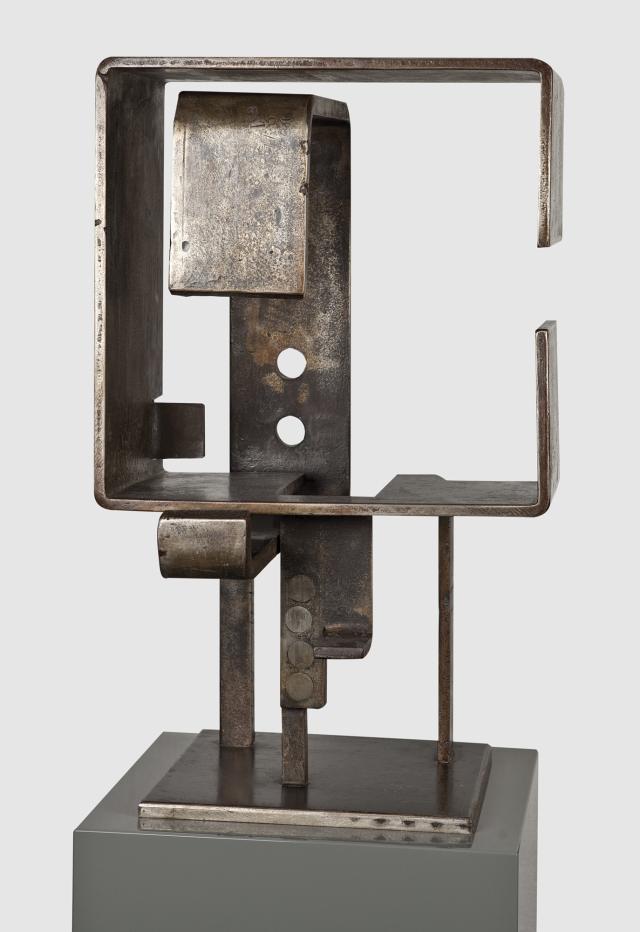In 1953, Bernhard Luginbühl committed himself fully to sculpting in iron and rapidly became one of its major representatives. He gave priority to salvaging scraps from metallurgical factories or wrought elements in order to invent works with organic, zoomorphic or anthropomorphic forms, obtained by assembling pieces of scrap iron and bolts, soldered and riveted together.
The process no longer consisted of modelling, casting or cutting, but of cutting out, fragmenting, salvaging and assembling. Deconstructing to reconstruct. Metallic plates and rods, combined with nuts and ball bearings, and with totally recognisable elements diverted from their primary function, allowed the sculptor to cross over the boundary between figuration and non-figuration and to create hybrid pieces, half-way between the industrial world from which they originated and an abstract, mythological world, the fruit of his imagination.
The sculptures resulting from this mode of production offered their interstices to the gaze which traversed them, like the series of C-Figuren developed by the artist between 1958 and 1964. Initially conceived as a wall sculpture inspired by an abstract animal form, this invention was then understood as a simple assemblage of iron plates in the form of the letter “C,” closely soldered together.
Through a play of solids and voids, angles and rounded shapes, the artwork interacts and converses with the surrounding space, which in turn confers a new expressivity to the industrial material through the play of colours, luminous reflections and patina of time. Although deeply immutable, the forms evolve in their overlapping, their volume and their spatial presence, depending on the onlooker’s viewing point.
The process no longer consisted of modelling, casting or cutting, but of cutting out, fragmenting, salvaging and assembling. Deconstructing to reconstruct. Metallic plates and rods, combined with nuts and ball bearings, and with totally recognisable elements diverted from their primary function, allowed the sculptor to cross over the boundary between figuration and non-figuration and to create hybrid pieces, half-way between the industrial world from which they originated and an abstract, mythological world, the fruit of his imagination.
The sculptures resulting from this mode of production offered their interstices to the gaze which traversed them, like the series of C-Figuren developed by the artist between 1958 and 1964. Initially conceived as a wall sculpture inspired by an abstract animal form, this invention was then understood as a simple assemblage of iron plates in the form of the letter “C,” closely soldered together.
Through a play of solids and voids, angles and rounded shapes, the artwork interacts and converses with the surrounding space, which in turn confers a new expressivity to the industrial material through the play of colours, luminous reflections and patina of time. Although deeply immutable, the forms evolve in their overlapping, their volume and their spatial presence, depending on the onlooker’s viewing point.
